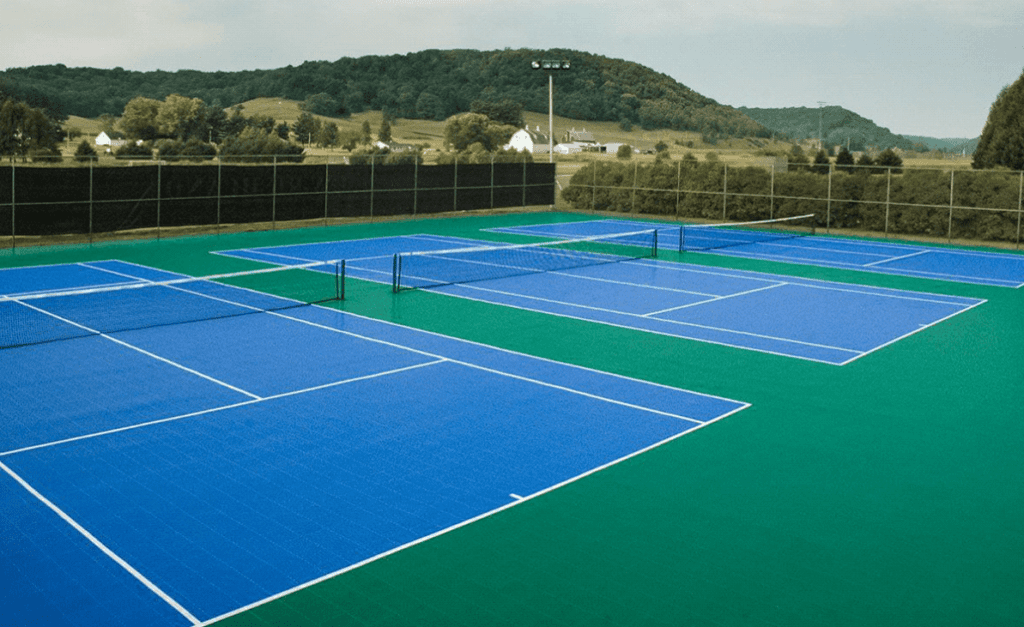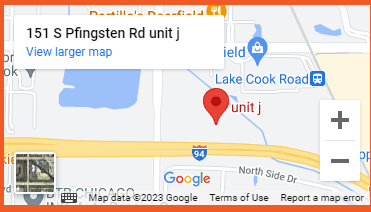Like any other outdoor surface, tennis courts must be maintained regularly to provide ideal playing conditions. Over time, the wear and tear of intense gameplay, weather exposure, and natural aging can impact the court’s surface. To restore its functionality and aesthetics, tennis court resurfacing becomes necessary. In this article, we will explore the resurfacing process, factors affecting the cost, and valuable tips to save money while maintaining the quality of the playing surface.
Resurfacing
A residential indoor tennis court design resurfacing is an extensive procedure designed to restore the court’s surface and guarantee peak performance. By addressing any damage, such as cracks or unevenness, and thoroughly cleaning the court, resurfacing experts create a solid foundation for applying new materials. These are carefully chosen to not only enhance the court’s visual appeal but also provide a smooth and consistent playing surface, allowing players to enjoy a game of tennis without any hindrances or limitations.
Materials Used in Resurfacing:
- Acrylic Coatings – Also known as acrylic resurfacing, commonly used for tennis court resurfacing, including hard courts, these coatings provide a durable, non-slip surface specifically designed for tennis courts.
- Cushioned Surfaces – These surface materials offer enhanced shock absorption, reducing stress on tennis balls and players’ joints, creating a more comfortable court surface.
- Synthetic Grass – Synthetic grass offers a consistent playing surface, excellent traction, and low maintenance requirements. They provide a natural-looking alternative to traditional hard or clay courts, with the added benefit of durability and all-weather playability.
Why Do Tennis Courts Need Resurfacing?
Tennis courts endure a significant amount of foot traffic, weather exposure, and general wear. Over time, the surface may become cracked, faded, uneven, or slippery. Resurfacing solves these problems and guarantees tennis players a fun and safe game.
Signs That a Tennis Court Needs Resurfacing:
- Cracks – Extensive cracks that affect the court’s playability.
- Fading or Discoloration – Noticeable change in tennis court color or fading of the court surface.
- Uneven Surface – Areas of the court that are not level or have significant bumps.
- Loss of Traction – Slippery surfaces that compromise player safety.
- Drainage Issues – Poor drainage, leading to puddles or standing water on the court.
What Happens During the Resurfacing Process?
A tennis court’s resurfacing procedure involves several important steps to guarantee its restoration and peak performance.
- First, the surface must be thoroughly cleaned using a pressure wash to remove all dirt, debris, and pollutants.
- After that, damaged regions and court cracks are painstakingly fixed to create a level and smooth playing surface.
- The court then goes through surface preparation, which involves leveling and fixing flaws.
- Finally, to revitalize the court’s appearance and improve its playability, many layers of carefully selected materials—acrylic coatings or other appropriate alternatives—are applied.
Together, these actions help turn a worn-out or damaged tennis court into a functional, revived surface ready to give tennis fans a pleasant and engaging game.
Can I Still Play While It’s Being Resurfaced?
Unfortunately, tennis courts cannot be used during court resurfacing. The work involves multiple stages, such as cleaning, crack repair, and application of new materials, which require the court to remain unused until the surface is fully cured.
Resurfacing Costs
The average cost of resurfacing a tennis court can vary depending on specific criteria, such as the court’s:
- Size
- Location
- Condition
- Selected materials
- Labor expenses
The cost of a court is directly related to its size; larger courts need more workforce and supplies, which drives up the price. The condition of the court is particularly crucial because courts that need extensive upkeep may need costly repairs like leveling and crack filling. The selection of resurfacing materials, including cushioned surfaces or acrylic, might significantly affect the final cost.
How Long Does It Take?
The duration of the process depends on various factors, including court size, weather conditions, court surfaces, and the extent of repairs needed. It can take several days to several weeks on average to resurface a tennis court.
How Often Should You Resurface a Tennis Court?
The amount of use, the climate, and maintenance affect how often resurfacing is necessary. Generally, it is recommended to resurface a tennis court every 4 to 8 years to maintain its quality and playability.
DIY Tennis Court Resurfacing vs. Hiring Professionals
Although some owners could think of handling it themselves in order to save money, it is essential to evaluate individual abilities and experience. Resurfacing is a difficult task requiring particular training, tools, and experience. Hiring experts lowers the chance of mistakes and subsequent repairs while ensuring a high-quality and durable outcome.
Tips to Save Money on Resurfacing
To effectively manage court resurfacing costs, there are several valuable tips to consider.
- First, regular maintenance is critical as it helps extend the lifespan of the court, reducing the need for frequent resurfacing.
- Furthermore, fixing minor problems and cracks helps avert future, more expensive and extensive repairs.
- When planning for resurfacing, it is advisable to seek multiple quotes from professionals like Home Court Advantage to compare costs and services.
- Lastly, scheduling the resurfacing during the off-season can result in lower costs and reduced disruption for players.
By implementing these tips, tennis court owners can effectively maintain their courts and make informed decisions to manage the costs.
Find a Resurfacing Pro Near You
To find a professional tennis court resurfacing company near you, consider contacting local sports facility contractors or searching online for reputable providers in your area. Inquire about their experience and knowledge in tennis court resurfacing, get quotes, and read client reviews. If you live in Illinois, Florida, or Indiana, consider Home Court Advantage. Showcasing its broad portfolio, whether it’s indoor or outdoor resurfacing, Home Court Advantage has you covered (from all corners).
Conclusion
Resurfacing a tennis court is essential to maintain quality, playability, and aesthetics. While the cost of resurfacing can vary based on factors such as court size, condition, chosen materials, and labor costs, investing in professional resurfacing ensures a long-lasting and safe playing surface. By considering the signs that indicate the need for resurfacing, understanding the resurfacing procedure, and implementing cost-saving tips, tennis court owners can make informed decisions and create an enjoyable playing experience for years to come.

Nate Parsons is the owner of Home Court Advantage, a leading manufacturer and supplier of premium residential and commercial athletic courts based in Northern Illinois. With a strong background in therapeutic recreation and business from York College, Nate has excelled in the sports industry, from college tennis to national rankings in platform tennis. He has served as the Director of Racquet Sports at Glen View Club, President of the Professional Platform Tennis Association, and as a teaching professional in tennis, pickleball, and platform tennis. Nate is also the founder of Pickleball AI, a platform for tracking players and points, and Club Dink, a pickleball brand that brings fun to the game.











